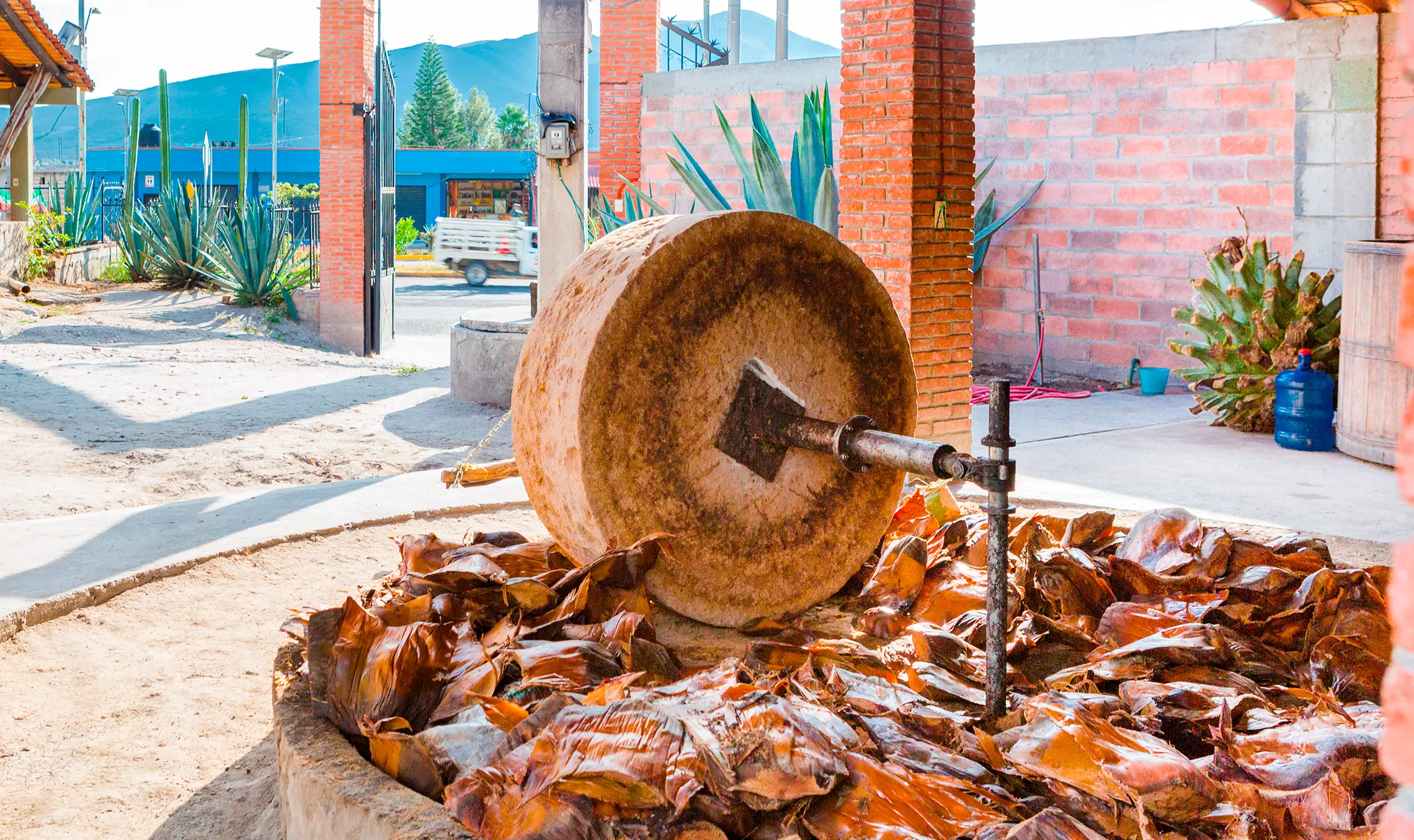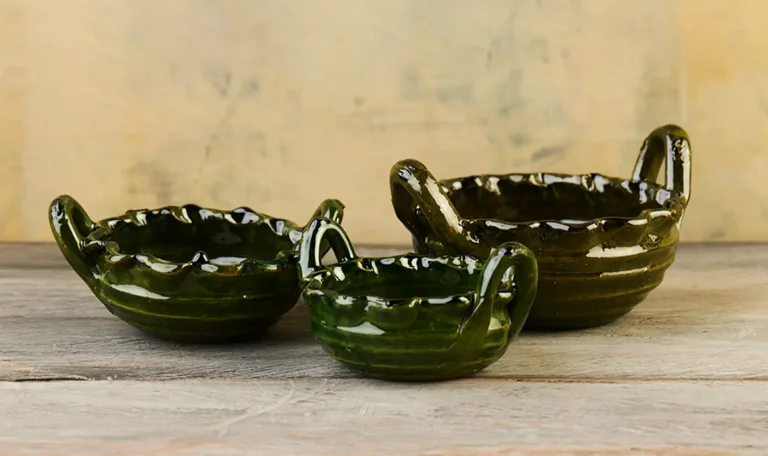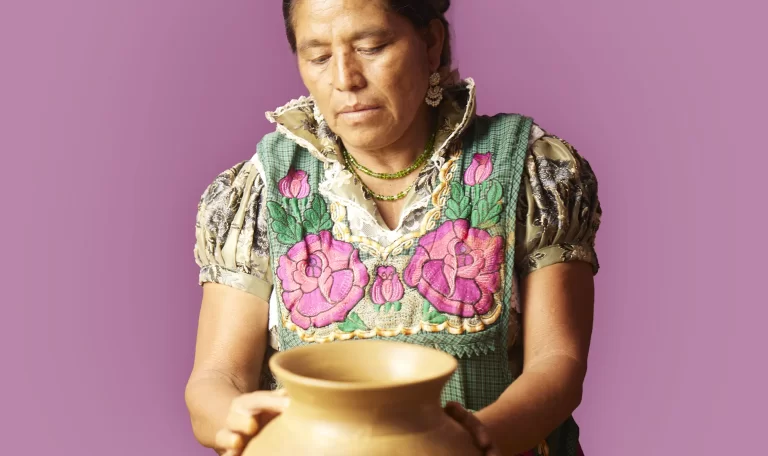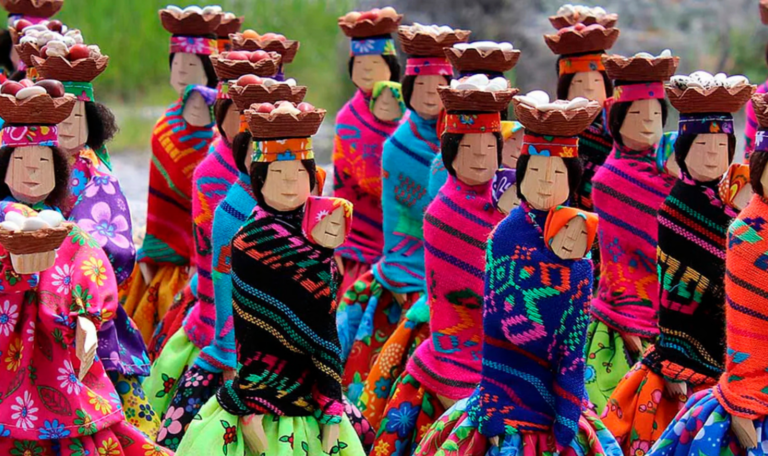Mezcal, an emblematic drink of Mexican culture, is deeply rooted in the ancestral traditions and mythological cosmovision of the native peoples. Its production process, which preserves ancestral techniques, reflects a symbolic and profound interaction with the land. It is not only an alcoholic beverage, but a manifestation of a cultural legacy that is transmitted from generation to generation. Made from agave, mezcal has a unique flavor that is not only the result of its complex distillation, but also contains stories and legends that link it to the divine and mystical. One of the most relevant legends in this context is that of Ehécatl and Mayahuel, which explains the origin of agave, the sacred plant from which mezcal is obtained.
According to Mexica mythology, when the gods created the world and human beings, they realized that men needed a means to express their worship and celebration of life. Thus, the wind god, Ehecatl-Quetzalcoatl, conceived the creation of a sacred drink that could provoke the joy of men. To this end, Ehecatl turned to the goddess of the maguey, Mayahuel, and transferred her to the earth. Together they became a tree with two branches: one called Quetzalhuéxotl, associated with Ehécatl, and the other called Xochicuahuitl, linked to Mayahuel. Upon noticing its absence, Mayahuel’s grandmother, Cicimitl, began her search, and when she found the tree, she broke the branch that corresponded to the goddess, from which the first agave bones sprouted. Thus, Mayahuel’s sacrifice gave rise to the maguey (or metl), a plant that would not only be the source of sacred beverages such as pulque, but which, later, when distilled, would become mezcal, a beverage that would celebrate the gods and be a source of joy for human beings.
Mezcal, therefore, is much more than a simple beverage. It is a tangible legacy of the mystical union between Ehécatl and Mayahuel, symbolizing the relationship between the wind, the earth and the heavens. This divine connection is reflected in the artisanal process of making mezcal, which, despite technological advances, retains a primitive essence in each of its steps. First, the master mezcaleros select the ripe agave piñas, which are cooked in stone ovens for several hours. This process, known as cooking, allows the release of the sugars present in the agave, which are transformed into a sweet juice. The juice is then fermented in wooden or clay vats, where natural yeasts convert the sugars into alcohol. Finally, the fermented liquid is distilled in copper or clay stills, where the master mezcalero controls the process precisely to obtain the best results.  to have a high quality product, in which both the flavor and the sensory characteristics of the agave are preserved.
to have a high quality product, in which both the flavor and the sensory characteristics of the agave are preserved.
The way mezcal is served is also an essential part of the experience. Traditionally, it is consumed in black clay mezcaleros, handcrafted vessels that possess specific properties that enrich the tasting of the drink. Black clay, known for its ability to maintain temperature, allows mezcal to retain its organoleptic characteristics for a longer period of time, in addition to enhancing its aromas, which improves sensory perception when drinking it. The use of these vessels not only responds to a practical need, but also represents an act of respect for Mexican traditions and folk art. The black clay mezcaleros, made by artisans from different regions of Mexico, are authentic pieces of art that reflect the country’s cultural legacy.
For those interested in acquiring quality black clay mezcaleros, the De Corazón México store offers pieces handcrafted by master artisans from Oaxaca, who preserve ancestral pottery techniques passed down through the centuries. When you purchase a black clay mezcalero at De Corazón México, you not only get a functional vessel, but also a unique piece of Mexico’s rich cultural and material history, which will allow you to enjoy mezcal in an authentic way. As they say in Oaxaca, “for every bad thing, mezcal; for every good thing, too, and if there is no remedy, a liter and a half”.






